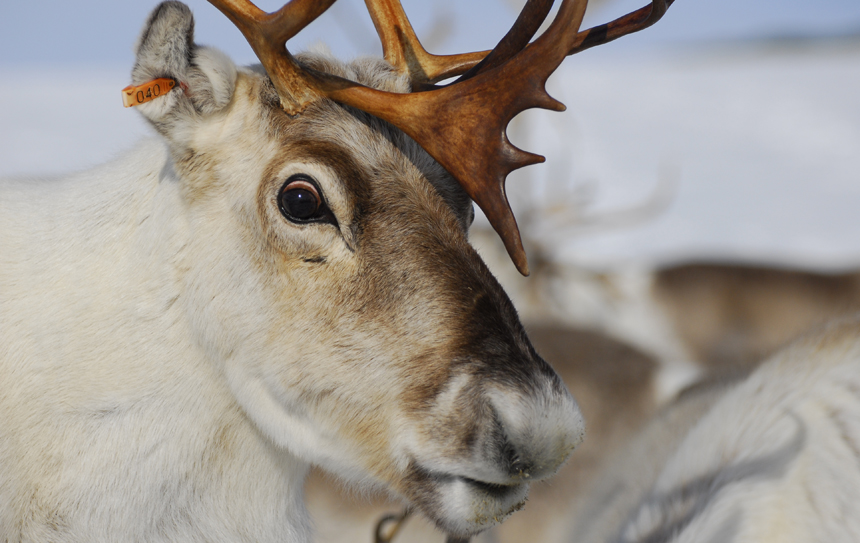Reindeer eyes change color in winter darkness

A layer behind the retina of an Arctic reindeer’s eye changes color in response to winter life in continual darkness.
© Kia Hansen
- More than 2 years ago
Life above the Arctic Circle is not easy — cold, wind, snow, a couple months of total darkness — but the creatures that live there have evolved to handle the harsh conditions. Arctic reindeer, for instance, have thick coats with two layers of fur. The pads on their hooves shrink in winter to give them better traction. And they can detect ultraviolet light, which helps them see when conditions are dim.
Researchers in Norway and England have now found another reindeer adaptation: One part of an reindeer’s eyes changes color in winter and increases the sensitivity of the animal’s vision. The study appears October 30 in the Proceedings of the Royal Society B.
The part of the eye that matters here is the tapetum lucidum, the layer of tissue behind the retina that reflects light and helps an animal to better see in dim light. It’s sometimes known as the “cat’s eye” because it’s the layer that causes the eyes of a cat and other critters to glow at night when a small amount of light hits the eye. In most mammals, this eyeshine is golden. And that’s true for reindeer in summer. In winter, though, a reindeer’s tapetum lucidum is blue.
The deep blue color is unusual for a mammal, and the seasonal change is unique, the researchers say. The shift to blue increases the scatter of reflected light so it passes to more photoreceptors. “This increases retinal sensitivity but at the cost of acuity, which may be an advantageous winter trade-off,” the researchers write. In other words, the reindeer get to see a little more, though what they see might not be all that sharp. It could be enough, however, for a reindeer to spot a predator and avoid getting eaten.
The color shift isn’t the only change in the reindeer eye; winter also brings a reduction in the spacing between collagen fibers in the tapetum lucidum and an increase in the pressure within the eye. This pressure increase occurs because in winter the eye stays fully dilated to let in as much light as possible. More pressure on the collagen probably pushes the fibers together, causing the color of the tapetum lucidum to change to blue, the researchers say.
Gold and blue aren’t the only tapetum lucidum color options for Arctic reindeer, it turns out. The research team found a third color, green, in a group of animals that lived at the University of Tromsø in Norway. These animals don’t live in total darkness in winter because the town’s lighting and the reflection of light off clouds keeps their habitat dimly lit. As a result, the researchers speculate, the eyes of these animals may not dilate fully in winter, and the pressure in their eyes may not increase enough to maintain the shift all the way to blue.






